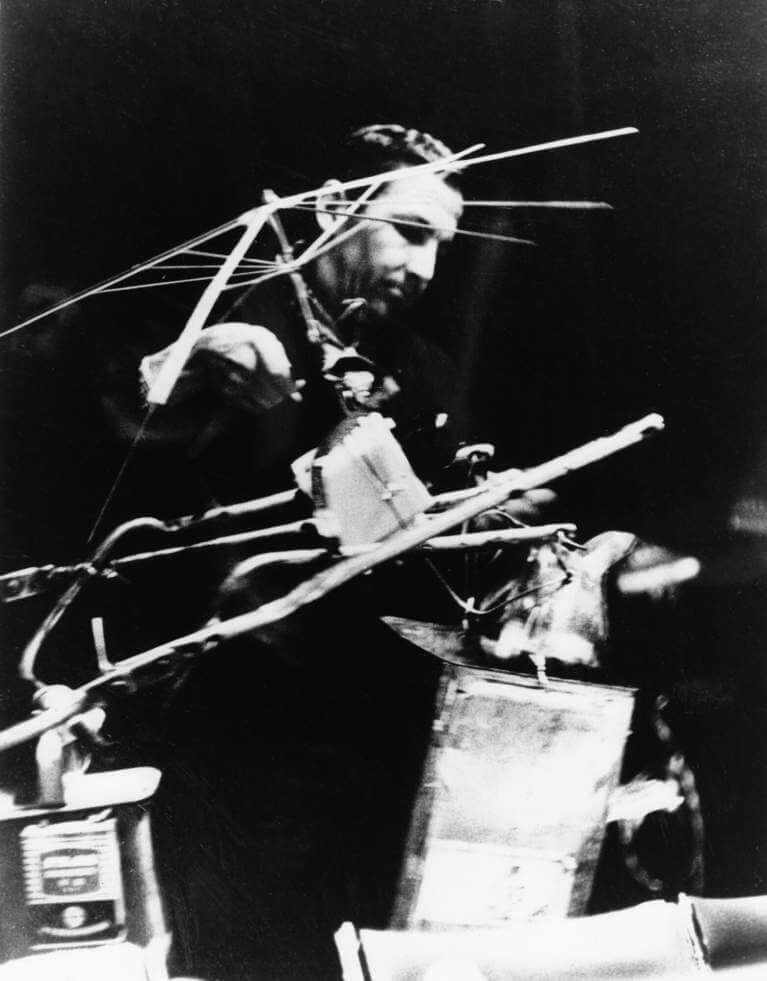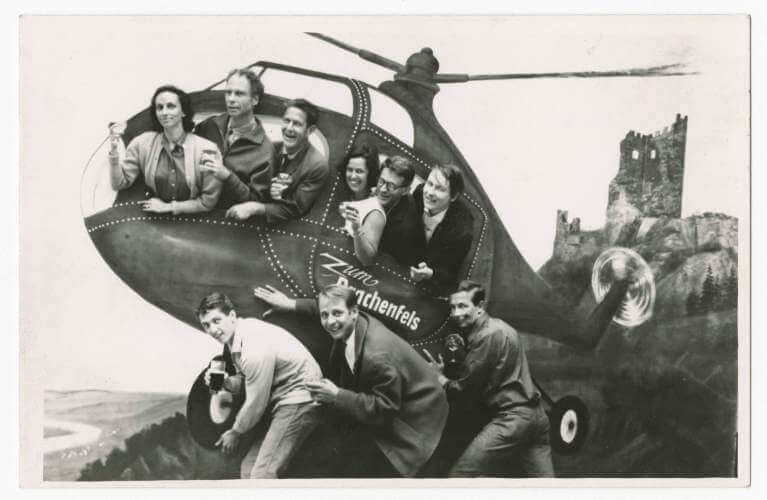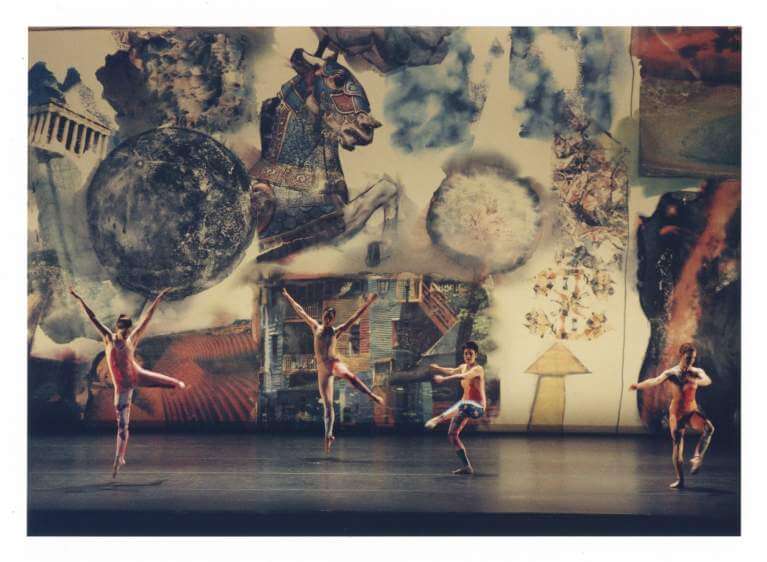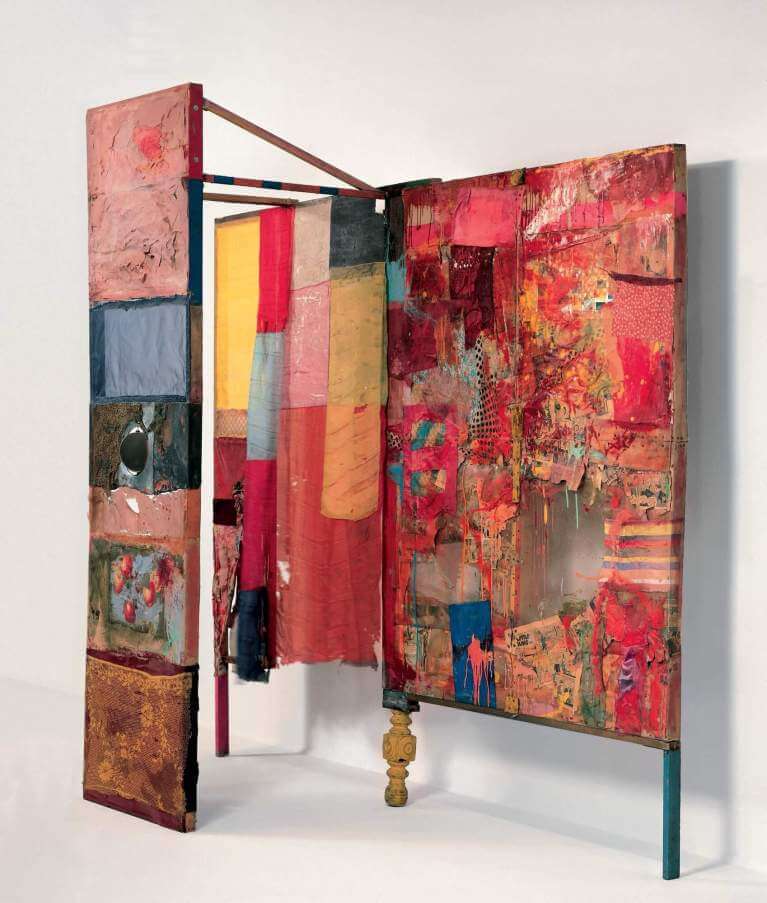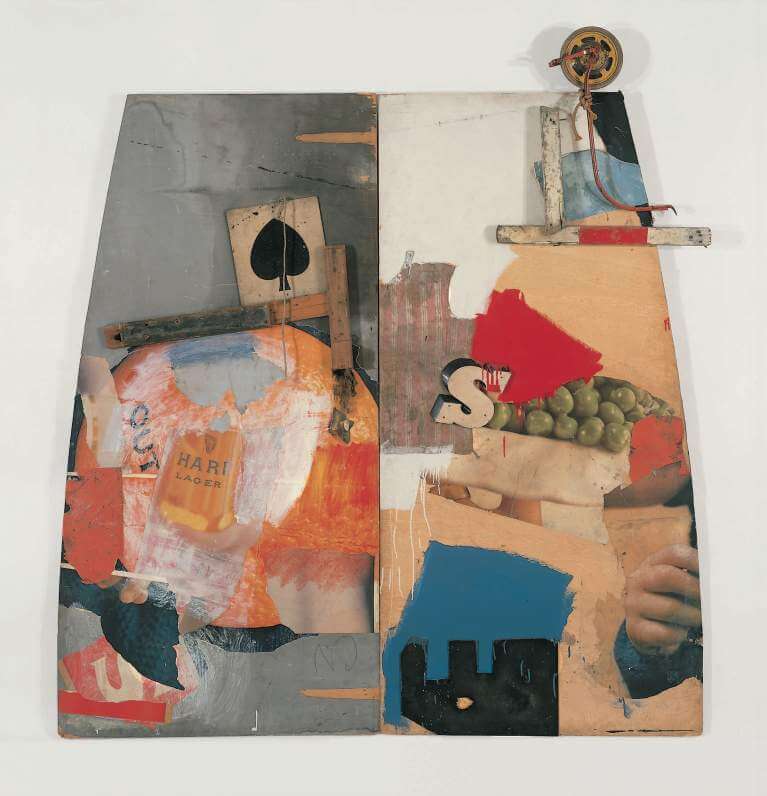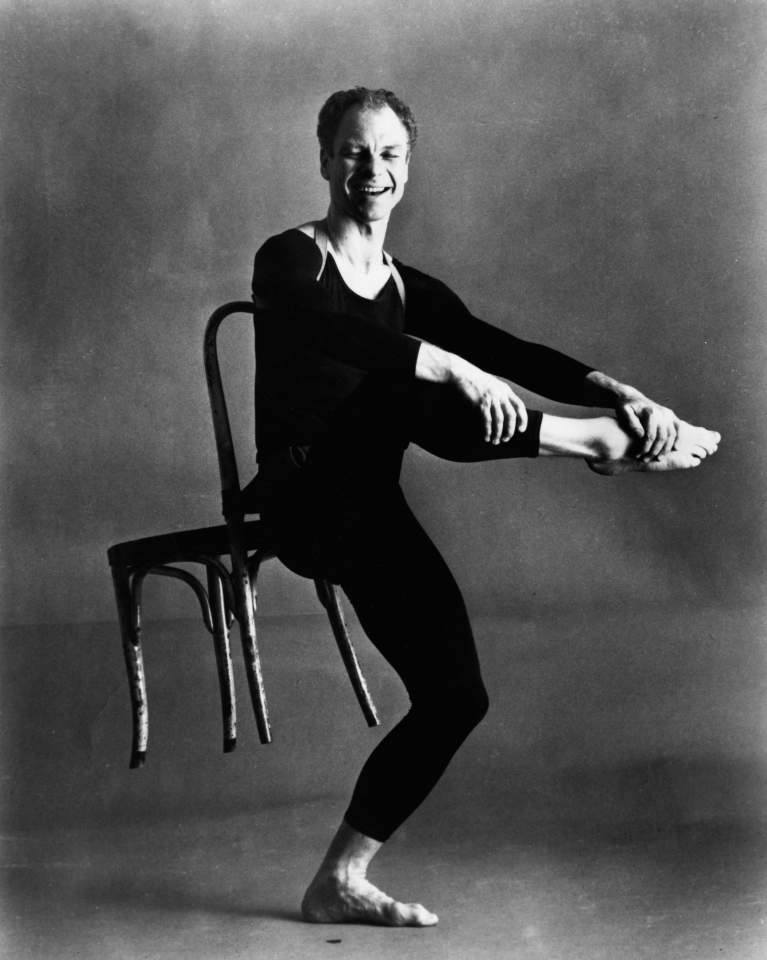
Costume design by Robert Rauschenberg for Merce Cunningham Dance Company's “Antic Meet” (1958). Production still of Merce Cunningham, 1958
Rauschenberg and Cunningham
Rauschenberg’s collaborative relationship with choreographer Merce Cunningham began in 1952 when they participated in an untitled event, referred to as Theater Piece No. 1, organized by composer John Cage at Black Mountain College, North Carolina. Rauschenberg officially began working with the Merce Cunningham Dance Company in 1954, and throughout the next decade, he contributed to over twenty performances, providing lighting, set, and costume designs.
Heeding Cunningham’s unusual approach to collaboration, Rauschenberg often worked independently with little guidance. As with the disparate actions that comprised Theater Piece No. 1, Cunningham believed that no medium should be subordinate—preferring music and decor to function as independent elements as opposed to complementing the choreography. Frequently dance, music, and decor came together only at the time of final rehearsals. Rauschenberg recalled, “It was the most excruciating collaboration, but it was the most exciting, and most real, because nobody knew what anybody else was doing until it was too late.”
Working with relative freedom, many of Rauschenberg’s stage designs echoed his contemporaneous artistic production. For Minutiae (1954), Rauschenberg ultimately created a freestanding Combine with fabric and collage elements on a wooden structure that resembled his Red Paintings (1953–54). In Aeon (1961), the kinetic machine made of scrap metal and stroboscopic lights reflected Rauschenberg’s interest in the relationship between art and technology. Other set designs featured typical Rauschenbergian visual elements. In a later collaboration with Cage and Cunningham, Rauschenberg’s monumental set for Travelogue (1977), titled Tantric Geography (1977), features a row of chairs, a bicycle wheel, and colorful silk fans that resemble the recurring color wheels in Rauschenberg’s work and his Jammer series (1975–76). The decor for Interscape (2000), titled Interscape Mirage (2000), consists of a similarly characteristic montage of visual imagery.
Despite their analogous relationship to his unique artworks and the independence with which they were created, Rauschenberg’s contributions often resonated with Cunningham’s choreographic concerns. Both were deeply interested in the relationship between art and life, and for several dances, such as Antic Meet (1958) and Story (1963), Cunningham asked Rauschenberg to utilize found objects in his sets and costumes—integrating the everyday into his performances. For Story, Cunningham wanted Rauschenberg to produce new sets for each performance comprised of locally sourced materials. When he could not locate sufficient supplies, Rauschenberg improvised “living sets.” In Venice, for example, he had an Italian stagehand sweep the stage throughout the performance and in four performances at London’s Phoenix Theater, Rauschenberg sat onstage and painted a picture, titled Story (1964).
In Story, the variety of visual elements complemented the choreography’s open-form structure, which allowed the dancers to choose freely from several sequences. Their costumes could also be changed at will during performances by adding different objects and garments to their unadorned leotards, enhancing the aesthetic of chance and variation. As was Rauschenberg’s intention with his enigmatic use of assemblage and disparate images, Cunningham maintained that the title did not signify a single story or narrative, rather “each spectator may interpret the events in his own way.”
Over the six decades of their relationship, Rauschenberg described his collaboration with Cunningham as founded on “carte-blanche trust,” attesting to a spirit of creative independence and mutual respect.
–Jennifer Sarathy, Research Assistant, 2017







